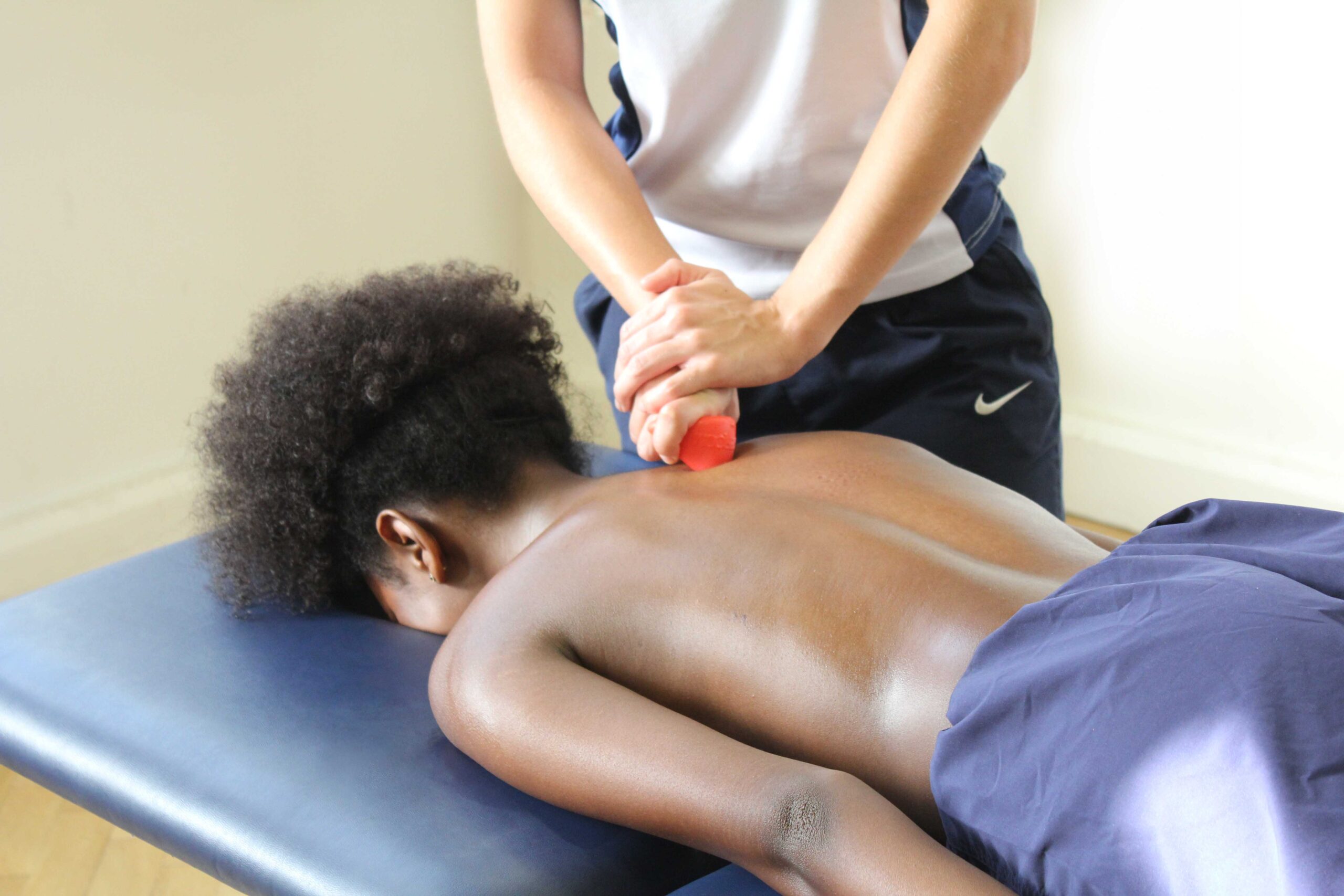- centre@esthersplacegh.com
- (+233) 050 572 1405
- Opening : Mon-Fri 09:00 - 18:00
Blog Update

T4 syndrome is a medical condition affecting the joints within the thoracic vertebrae of the spinal column, causing pain, paresthesia, reduced mobility and discomfort.
At Esther’s place well-being hub, we specialize in T4 syndrome to empower recuperation or recovery, improve spinal loading and reduce pain.
Within the thoracic spine, there are 12 vertebrae which facilitate spinal movement and provide support. The vertebrae joints comprises of the vertebral discs and facet joints; and a dysfunction, general wear and tear or traumatic injury to these bones can compress, pinch or irritate the nearby nerves, causing pain and discomfort to the back. This pain is usually felt in the upper body, typically down the arms, in the head, neck and chest area (inner portion of the sternum). The nerve compression or joint dysfunction at the 4th thoracic vertebra causes T4 syndrome.
T4 syndrome is somehow referred to as “diagnosis of exclusion” because it is only diagnosed when presentation and symptoms do not match with other spinal conditions. T4 syndrome is relatively uncommon condition, and its diagnosis is even rarer due to the complexities and other potential sources of pain in the back which needs to be ruled out.
Causes of T4 syndrome
Symptoms of T4 syndrome
As a diagnosis of exclusion, T4 syndrome is mainly identified through pain presentation, pattern and response to muscle relaxants and other medications. Associates between the clinical presentation and the specific range of restricted movements is important. Some symptoms includes:
Treatment
If you have any of the listed symptoms, it is important to have it assessed by a physical therapist or physiotherapist. The therapist will then be able to rule out any other conditions. They may also refer you for a scan (CT scan, MRI or X-ray).
At Esther’s Place Well-Being Hub, we design a therapeutic modality to best fit your recovery goals through:
At Esther’s Place well-Being Hub, your physical therapist may also advise you on thermal or cryotherapy (heat and ice application) and rest. Additionally, they might recommend for the use of spinal support (braces) or therapeutic pillow which is already available at the center.
At Esthers Place, we are committed to providing our clients with the highest quality care and support.
Esther’s Place is a wellness and rehabilitation center that is dedicated to helping individuals prevent and recover from injury, illness, or other conditions that may impact their physical, mental, and emotional wellbeing.
WhatsApp Us